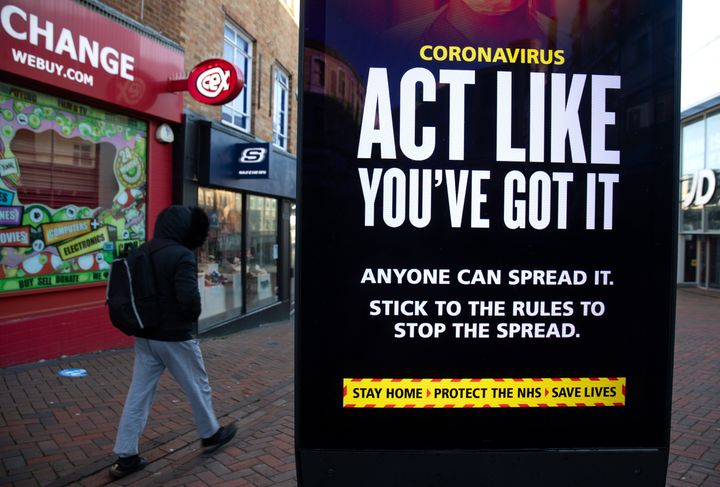Covid cases could be on the rise in four areas of England, new data from one of the country’s biggest studies on the virus reveals.
While the ninth React report, published on Thursday by Imperial College London and Ipsos MORI, shows infections in England have fallen by two-thirds since January’s study, rates of decline have slowed.
There was no change in Covid prevalence in in Yorkshire and The Humber between the January and February reports, while cases had risen slightly in London, the South East, East Midlands and the West Midlands.
Steven Riley, professor of infectious disease dynamics at Imperial College London, said between January and February there was a “substantial drop” in cases across all regions of the country.
But he added: “The prevalence of swab positivity in England continues to fall but the rate of decline has slowed and there are some areas where prevalence may be increasing.
“In London the rate of decline certainly appears to have stopped and there is a possible signature there that it may be going up.”
The study, which tested more than 165,000 volunteers between February 4 and February 23, also found higher Covid rates among teachers and nursery workers when compared to the wider population.

In January, people who worked in education – including schools, nurseries or childcare – had 20% higher odds of infection compared to those who do not work in these professions.
In February, this rose to 43%, according to data from Imperial College London’s React study which has been analysing data from swab tests taken from people across England since May last year.
The figures show that people working in healthcare and care homes also have a higher risk of infection.
And people who work in public transport are twice as likely as people who do not work in this sector to become infected with the virus, the figures suggest, with key workers overall having a 19% increased risk in February.
Health secretary Matt Hancock said that there is “some cause for concern” that progress in the reduction in infections could be slowing down, and even reversing in some regions, with researchers warning that if infection rates start to rise then people who are due their jab imminently could fall ill.
The government has continually pointed to the vaccination rollout as the path out of the pandemic, but experts say infection rates need to be as low as possible to give the vaccination programme the best chance of working.
The Imperial College London’s React study has been analysing data from swab tests taken from people across England since May 2020.
To date more than 1.4 million people have provided swabs so experts can assess infection rates across the country.
The study, which has been published as a pre-print, found that that overal the rate of infection in the community was 0.49% – down by two-thirds from January when the rate was 1.57%.
But when researchers compared the decline from the first half of February to the second half there was a slower rate of reduction. In the first half of February the estimated rate of infection was 0.51% and in the second half of the month the rate was 0.47%.
Steven Riley said: “If we want the vaccination technology and rollout to give the most people the best chance then we do need to get the infection rate lower for a little bit longer.
“What we need is to keep infections really low so that people who will get offered a vaccine three or four weeks from now or six weeks from now don’t get infected just before they are offered a vaccine.”
